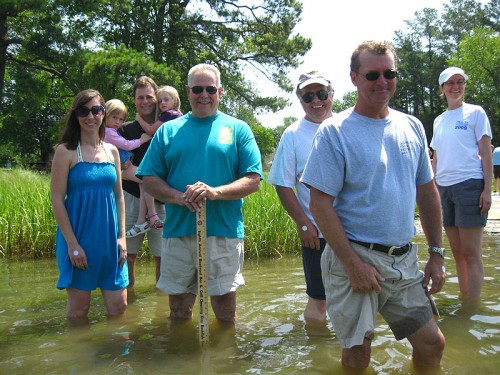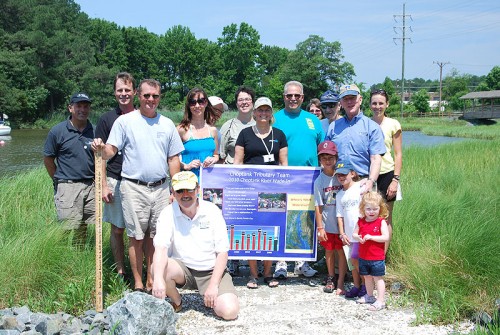Choptank Trib Team Wades Into San Domingo Creek
Allison Dungan ·On Saturday June 12th the Choptank Tributary Team held their annual wade-in in conjunction with the Environmental Concern native plant sale. Team members were able to see their feet at a depth of 25 inches, a one inch improvement from last year. In the picture below are Delegate Jeannie Haddaway Riccio, State Senate Candidate Chris Jakubiak with his children, Choptank River Keeper Tim Junkin, and Trib Team members Bill Wolinski and Jennifer Dindinger.

Tributary wade-ins were started by State Senator and Patuxent River advocate Bernie Fowler in 1988, when Fowler and his friend Tom Wisner first waded into the Patuxent River and recorded the depth at which they could still see their sneakers (10 inches, much less than what Fowler had observed as a young man in 1960). Fowler began using the "sneaker index" in order to assess the water clarity of the Patuxent River over time in an effort to raise awareness for the degradation of the river. While scientific measure of turbidity, dissolved oxygen, and chlorophyll are often not commonly understood, even children can understand that the further they can walk into the water and see their feet the better; especially if their feet are surrounded by grasses!

While the wade-in "sneaker index" is a very unofficial measure of water clarity that would not stand up in a peer reviewed journal (I think this year's measurement was a little over estimated and last year was under represented because of an excited canine participant stirring up the bottom), it does achieve the very significant result of getting citizen and politician sneakers wet with river water. This is just another way of conveying the science of water quality in a way that everyone can understand with the goal of affecting social and environmental change.

